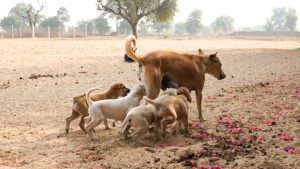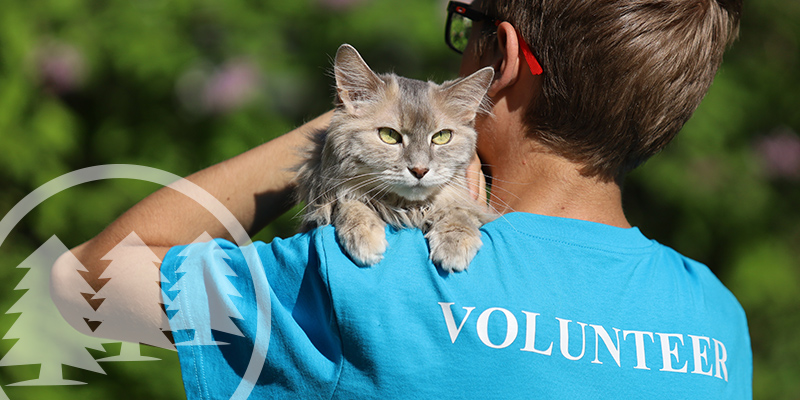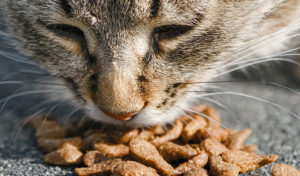The problem of stray animals in HOA community areas is a common one. But, there are some measures HOA boards can take to prevent strays from loitering and discourage residents from feeding them.
The Slippery Slope of Allowing Stray Animals in HOA Community Premises
Stray animals may not seem like an issue in a community, especially for one that has a pet-friendly policy. But, there is a huge difference between pets and strays. Pets are domesticated animals who are used to living indoors, whereas strays typically run wild. The board should make it clear from the get-go that the association’s pet rules apply to homeowners’ pets and not to stray animals.
Some may wonder why feeding stray animals in an HOA community is even a big deal. They are just animals, and they need food like everyone else. While compassion may drive some residents to feed strays, this is ultimately a bad decision as it can cause a domino effect in the community.
Feeding Leads to Loitering
Feeding stray animals in HOA community areas can prompt them to stick around. Strays usually stay in places where there’s food. So, if residents start feeding them, they are more inclined to remain in the neighborhood. Feeding stray dogs and cats conditions them into thinking that they have a constant source of food in the area. As a result, they will loiter and become a nuisance to residents.
Unsanitary and Unhealthy
Stray animals are not trained like pets. Therefore, they are more likely to pee or defecate on private property. The association will also have a harder time with cleaning and maintenance, as these strays can also relieve themselves in common areas.
In addition to this, some strays carry diseases. These diseases can be passed on to other animals (pets) and even to humans. No one knows where these stray animals have been, so there is no saying for sure how clean and healthy they are.
Property Destruction
If you find residents feeding stray animals in HOA community areas, you’ll notice that the strays tend to remain in the neighborhood hoping to get more food. This increases the chances of property destruction. Stray animals can damage fences, outdoor furniture, and the HOA’s property. Sometimes, they may do it as a way to lash out or gain attention if they want more food. Other times, it’s just in their nature to do so. Gardens and landscaping are particularly vulnerable to damage from strays.
Inviting Other Pests
Stray animals have a tendency to rummage through bins in search of food scraps. When they do this, they leave behind a mess of trash, with the bin usually tipped over. The resulting litter can attract other pests into the community. These include stray cats and dogs, raccoons, rodents, and insects.
Harmful to Wildlife
Interacting with stray wild animals like raccoons, deer, and foxes may be harmful to them. This is because interaction can disrupt their ability to hunt. They might become dependent on human intervention. Moreover, the food humans feed them might be harmful to their digestive systems.
 Safety Hazard
Safety Hazard
Apart from possibly carrying diseases, stray animals in HOA community areas can also physically attack and injure others. Stray cats and dogs might get into fights with homeowners’ pets. They may also hurt residents, including small children.
Lowered Appeal and Property Value
It may seem silly to think of stray animals having a negative impact on property values, but it does happen. When a community is overrun with stray animals, fewer people will find it attractive. Before long, the massive population of stray animals can drag down the community’s appeal and property values. In addition to all of the above consequences, lower property values certainly won’t make homeowners happy. And, to think, all this came about just because a few residents decided to feed the strays.
What Homeowners Associations Can Do
While it’s not entirely possible to control the behavior of stray animals, there are some things an HOA board can do to handle the situation.
1. Establish a Complaint System
 One of the first things an HOA board can do is establish a complaint system. Asking homeowners to report the stray animals they encounter will greatly help the association address the problem immediately and minimize strays in the community. When asking for complaints, make sure to get a detailed description of the stray animal, including where the homeowner spotted it.
One of the first things an HOA board can do is establish a complaint system. Asking homeowners to report the stray animals they encounter will greatly help the association address the problem immediately and minimize strays in the community. When asking for complaints, make sure to get a detailed description of the stray animal, including where the homeowner spotted it.
2. Call Animal Control
Rarely is a homeowners association capable of dealing with stray animals hands-on. A vast majority of communities seek professional help. This is the best way to go if you have a problem with stray animals in the community, especially if they are feral or dangerous. Your local government may have an animal control department that can wrangle the strays. If not, some private companies, like Alley Cat Allies, handle such problems for associations and individual homeowners.
3. Institute Repercussions to Discourage Feeding
Since feeding strays is a root cause, it may be worthwhile to enact a policy prohibiting this act. To enforce the policy and discourage feeders, your HOA board may want to impose fines. Of course, it is common for many boards to issue warnings first before slapping a homeowner with a fine, though it will depend on your governing documents. It’s also a good idea to encourage owners to report a neighbor feeding stray animals.
4. Form a Wildlife Committee
It may be wise to start a committee dedicated to managing strays and wildlife. The committee can establish educational programs on wildlife control and listen to the residents’ opinions regarding the topic. They can also deliver resources and help the board make ethical decisions related to stray animals in HOA community areas.
Preventing Breeding in the Community
 Stray animals in HOA community areas present another problem — breeding. When a specific neighborhood accumulates a lot of strays, they tend to breed and produce more strays. This exacerbates the problem and makes it harder for an association to deal with. If you want to prevent this, your HOA board may want to encourage residents to participate in local TNR programs.
Stray animals in HOA community areas present another problem — breeding. When a specific neighborhood accumulates a lot of strays, they tend to breed and produce more strays. This exacerbates the problem and makes it harder for an association to deal with. If you want to prevent this, your HOA board may want to encourage residents to participate in local TNR programs.
TNR stands for trap, neuter, and return. These programs offer basic medical care to stray cats, in particular, with the goal of limiting the local stray cat populace. The steps of such programs are pretty clear:
- Trap – the cat is trapped in a humane manner so it can proceed to the next step.
- Neuter – also known as sterilization, male and female cats undergo a medical procedure that prevents them from breeding. During the course of the procedure, the stray cats also receive basic veterinary care such as vaccinations.
- Return – the final step is to return the stray cat to where they were taken from.
While TNR programs don’t address the existing population of stray cats, they can significantly help reduce the number of stray cats in the future.
Taking Swift Action
The problem with stray animals in HOA community premises may not seem too grave at first glance. However, as you can see, it can balloon into a much larger issue and even cause other problems in the neighborhood. As such, HOA boards should take action, especially if the association is already experiencing a high volume of strays.
Handling community affairs can feel quite burdensome for a self-managed board. An HOA management company such as Cedar Management Group can help with this. Call us today at (877) 252-3327 or email us at help@mycmg.com to learn more about our services.
RELATED ARTICLES:
- Are HOA Pet Restrictions Allowed?
- Service Animals In HOAs: What Does The Law Say?
- HOA Fines: How To Protect Homeowners From Increasing Fines







